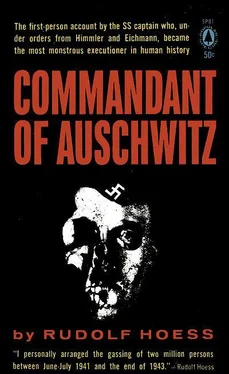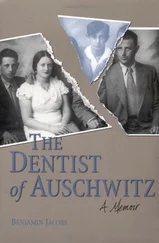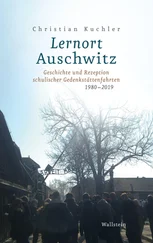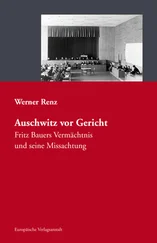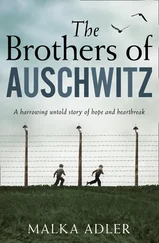Ordinary watches were likewise sent in their thousands to Sachsenhausen. A large watchmaker’s shop had been set up there, which employed hundreds of prisoners and- was directly administered by Department DII (Maurer). The watches were sorted out: and repaired in the workshop, the majority being later dispatched for service use by front-line SS and army troops.
Gold from the teeth was melted into bars by the dentists in the SS hospital and forwarded monthly to the Sanitary Head Office.
Precious stones of great value were also to be found hidden in teeth that had been filled.
Hair cut from the women was sent to a firm in Bavaria to be used in the war effort.
Unserviceable clothing was sent for salvage, and useless footwear was taken to pieces and remade as far as possible, what was left over being converted into leather dust.
The treasures brought in by the Jews gave rise to unavoidable difficulties for the camp itself. It was demoralizing for the members of the SS, who were not always strong enough to resist the temptation provided by these valuables which lay within such easy reach. Not even the death penalty or a heavy prison sentence was enough to deter them.
The arrival of these Jews with their riches offered undreamed-of opportunities to the other prisoners. Most of the escapes that were made were probably connected with these circumstances. With the assistance of this easily acquired money or watches and rings, etc., anything could be arranged with the SS men or the civilian workers. Alcohol, tobacco, food, false papers, guns, and ammunition were all in the day’s work. In Birkenau the male prisoners obtained access to the women’s camp at night by bribing some of the female supervisors. This kind of thing naturally affected the whole camp discipline. Those who possessed valuables could obtain better jobs for themselves, and were able to buy the good will of the Capos and block seniors, and even arrange for a lengthy stay in the hospital where they would be given the best food. Not even the strictest supervision could alter this state of affairs. Jewish gold was a catastrophe for the camp.
In addition to Auschwitz there existed, so far as I am aware, the following extermination centers for Jews:
Culenhof, near Litzmannstadt — Engine exhaust gases
Treblinka on the Bug — Engine exhaust gases
Sobibor near Lublin — Engine exhaust gases
Belzec near Lemberg — Engine exhaust gases
Lublin (Maidenek) — Cyclon B
I myself have only seen Culenhof and Treblinka. Culenhof had ceased to be used, but in Treblinka I saw the whole operation.
The latter had several chambers, capable of holding some hundreds of people, built directly by the railroad track. The Jews, went straight into the gas chambers without undressing, by way of a platform which was the height of the cars. A motor room had been built next to the gas chambers, equipped with various engines taken from large trucks and tanks. These were started up and the exhaust gases were led by pipes into the gas chambers, thereby killing the people inside. The process was continued for half an hour until all was silent inside the rooms. In an hour’s time the gas chambers were opened up and the bodies taken out, undressed and burnt on a framework made of railroad ties.
The fires were stoked with wood, the bodies being sprayed every now and then with oil refuse. During my visit all those who had been gassed were dead. But I was told that the performance of the engines was not always uniform, so that the exhaust gases were often insufficiently strong to kill everyone in the chambers. Many of them were only rendered unconscious and had to be finished off by shooting. I heard the same story in Culenhof and I was also told by Eichmann that these defects had occurred in other places.
In Culenhof, too, the Jews sometimes broke the sides of the trucks in an attempt to escape.
Experience had shown that the preparation of prussic acid called Cyclon B caused death with far greater speed and certainty, especially if the rooms were kept dry and gastight and closely packed with people, and provided they were fitted with as large a number of intake vents as possible. So far as Auschwitz is concerned, I have never known or heard of a single person being found alive when the gas chambers were opened half an hour after the gas had been inducted.
The extermination procedure in Auschwitz took place as follows:
Jews selected for gassing were taken as quietly as possible to the crematoriums, the men being separated from the women. In the undressing rooms, prisoners of the Special Detachment, detailed for this purpose, would tell them in their own language that they were going to be bathed and deloused, that they must: leave their clothes neatly together and above all remember where they had put them, so that they would be able to find them again quickly after the delousing. The prisoners of the Special Detachment had the greatest interest in seeing that the operation proceeded smoothly and quickly. After undressing, the Jews went into the gas chambers, which were furnished with showers and water pipes and gave a realistic impression of a bathhouse.
The women went in first with their children, followed by the men who were always the fewer in number. This part of the operation nearly always went smoothly, for the prisoners of the Special Detachment would calm those who betrayed any anxiety or who perhaps had some inkling of their fate. As an additional precaution these prisoners of the Special Detachment and an SS man always remained in the chamber until the last moment.
The door would now be quickly screwed up and the gas immediately discharged by the waiting disinfectors through vents in the ceilings of the gas chambers, down a shaft that led to the floor. This insured the rapid distribution of the gas. It could be observed through the peephole in the door that those who were standing nearest to the induction vents were killed at once. It can be said that about one-third died straight away. The remainder staggered about and began to scream and struggle for air. The screaming, however, soon changed to the death rattle and in a few minutes all lay still. After twenty minutes at the latest no movement could be discerned. The time required for the gas to have effect varied according to the weather, and depended on whether it was damp or dry, cold or warm. It also depended on the quality of the gas, which was never exactly the same, and on the composition of the transports which might contain a high proportion of healthy Jews, or old and sick, or children. The victims became unconscious after a few minutes, according to their distance from the intake shaft. Those who screamed and those who were old or sick or weak, or the small children, died quicker than those who were healthy or young.
The door was opened half an hour after the induction of the gas, and the ventilation switched on. Work was immediately begun on removing the corpses. There was no noticeable change in the bodies and no sign of convulsions or discoloration. Only after the bodies had been left lying for some time, that is to say after several hours, did the usual death stains appear in the places where they had lain. Soiling through opening of the bowels was also rare. There were no signs of wounding of any kind. The faces showed no distortion.
The special detachment now set about removing the gold teeth and cutting the hair from the women. After this, the bodies were taken up by elevator and laid in front of the ovens, which had meanwhile been stoked up. Depending on the size of the bodies, up to three corpses could be put into one oven retort at the same time. The time required for cremation also depended on this, but on an average it took twenty minutes. As previously stated, crematoriums I and II could cremate about 2,000 bodies in twenty-four hours, but a higher number was not possible without causing damage to the installations. Numbers III and IV should have been able to cremate 1,500 bodies in twenty-four hours, but, as far as I know, these figures were never attained.
Читать дальше
